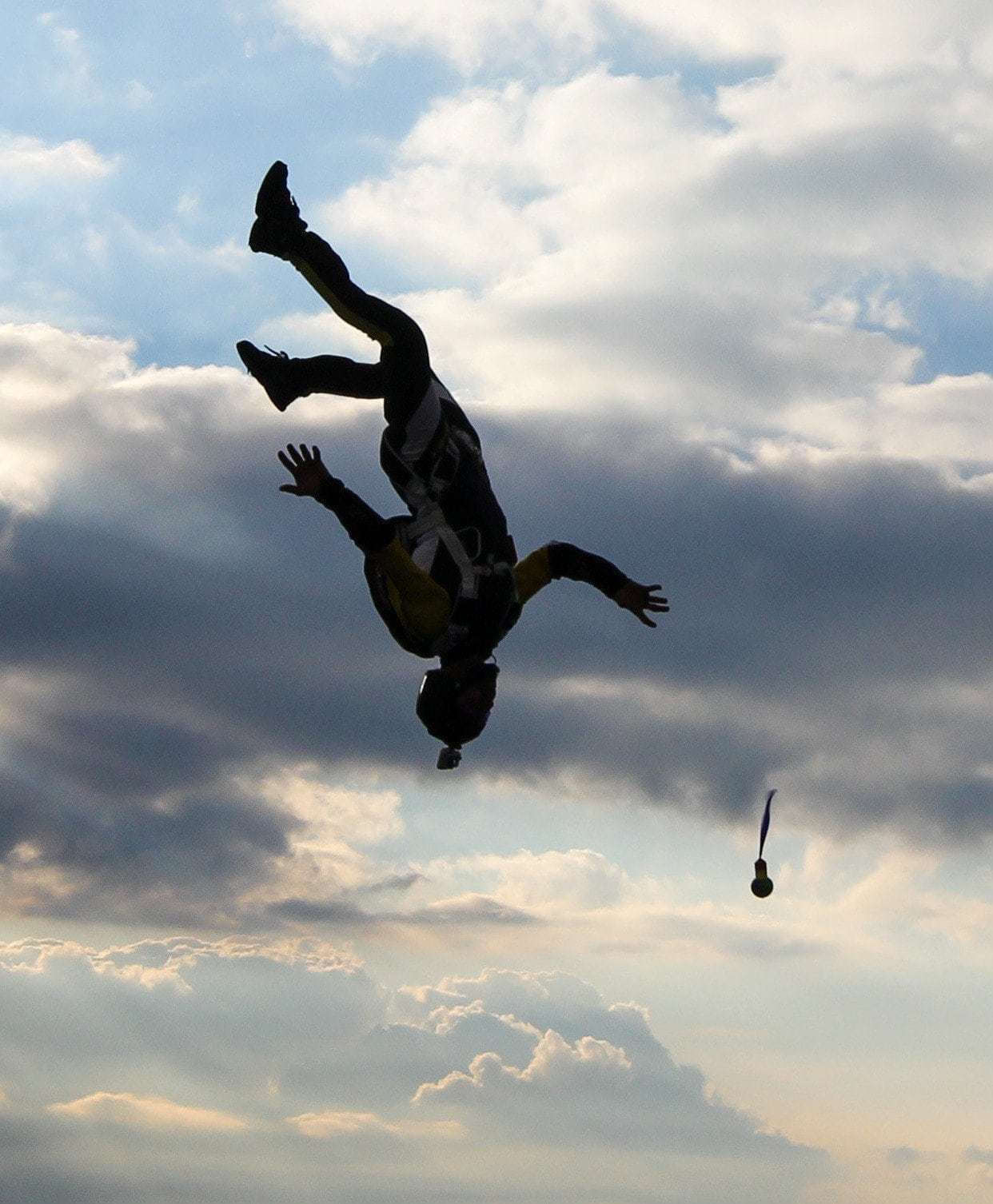

Some people say it ‘ feels like a roller coaster ’ when you skydive because it will give you the ‘stomach drop’ feeling, but it’s pretty rare that you’ll get to experience this tummy tickling sensation during the skydiving freefall. Every tandem skydiving rig also includes an AAD (Automatic Activation Device), which automatically deploys the parachute if the instructor hasn’t manually done so by a predetermined altitude. If something were to go wrong with the main canopy, there’s another one immediately available. What most non-skydivers don’t realize is that there is a ‘back-up’ parachute, called a reserve, in your skydiving rig. Skydivers are all about calculated risks and mitigating those risks by being extremely safety conscious. Most skydiving fatalities are related to operator error not equipment malfunction, which is the typical fear. Relatively speaking, there are few fatal accidents in the skydiving community – especially on the tandem side of the sport. Fatal accidents happen every day from everyday things. Skydiving is an extreme sport, so it can attract a lot of attention, and not always the good kind. 1 in 500,000 die in a tandem skydiving incident.1 in 357,000 die in a solo skydiving incident.1 in 161,856 die from a lightning strike.1 in 57,825 die from an insect sting or bite.1 in 107 people die in an automobile accident.We’re not suggesting skydiving isn’t risky – of course it is! But how risky is skydiving? Peep these no-fun but important stats: They’ve been tracking skydiving safety stats since 1961 and, thanks to advancements in skydiving technology and sophisticated training tactics, the risk of dying from skydiving is low. If you’re a statistics person, this one’s for you: skydiving is less dangerous than driving a car! In fact, the United States Parachute Association (USPA) recently reported that the sport of skydiving has never been safer. SKYDIVING MYTH #3: SKYDIVING IS DANGEROUS! However, it only appears that way because the ‘ outside’ videographer is still falling at their terminal velocity while the tandem pair is being slowed down by their parachute. *Fun fact: the current world record for the fastest skydiving speed is 373.6 mph held by Henrik Raimer at the 2016 FAI World Championships! Woo! SKYDIVING MYTH #2: YOU GO UP WHEN THE PARACHUTE OPENSīefore most people come out to do their first tandem skydive, they will sometimes watch skydiving videos to help them prepare for when it’s their turn to jump – and we recommend it ! In the tandem skydiving video, it may seem like the tandem skydivers ‘go up’ when the instructor deploys the parachute. Streamline your body orientation and/or add weight (some add literal weights), and you lessen drag and speed up your fall rate. This is how skydivers can “catch-up” to their friends in the sky. By presenting more surface area to the wind, you create more drag, which slows your fall rate.
#Skydiving freefall speed how to#
These fantastic physics facts have enabled skydivers to figure out how to maneuver their bodies in ways that can increase or decrease their fall rate. And, of course, the opposite is true too – lighter skydivers fall slower, as do those who present more surface area to the wind. To put it simply: more weight + less surface area = faster fall. However, figuring out your fall rate requires consideration of weight (body weight and gear) and surface area. It is true that the average terminal velocity (maximum freefall speed) is around 120 mph for most skydivers. Here are 5 skydiving myths, debunked! SKYDIVING MYTH #1: EVERYONE FALLS AT THE SAME SPEED But, we’re going to set the record straight, once and for all. Don’t worry, we’re not offended – we understand that this is for pure entertainment and is meant to add excitement and drama to keep you intrigued from title to credits. Read on…ĭue to television shows and popular movies, most people think they have a pretty good idea of what skydiving looks like before even trying it! Maybe to your surprise (or maybe not), the way skydiving is portrayed on television is usually WRONG – especially when it comes to how the gear looks and works. In this article, we will debunk the most popular skydiving myths. This scene plays out examples of the many misconceptions out there when it comes to skydiving. You know the one: skydivers in freefall for almost four minutes (um, three times the normal amount!), having a full-blown conversation in the sky (sooo not happening!). If you’ve seen Point Break as many times as we have, you’ll remember the famous skydiving scene.


 0 kommentar(er)
0 kommentar(er)
